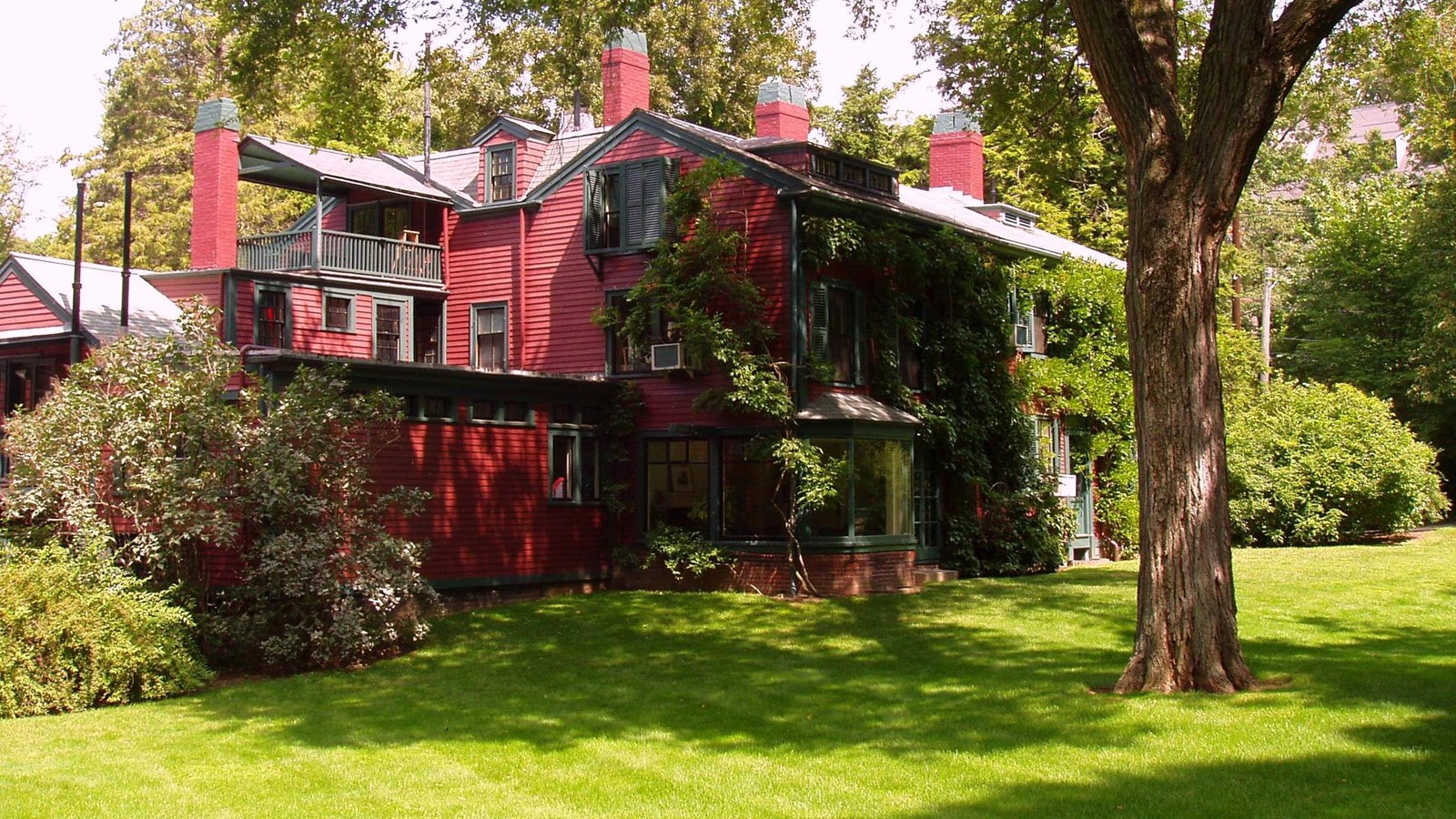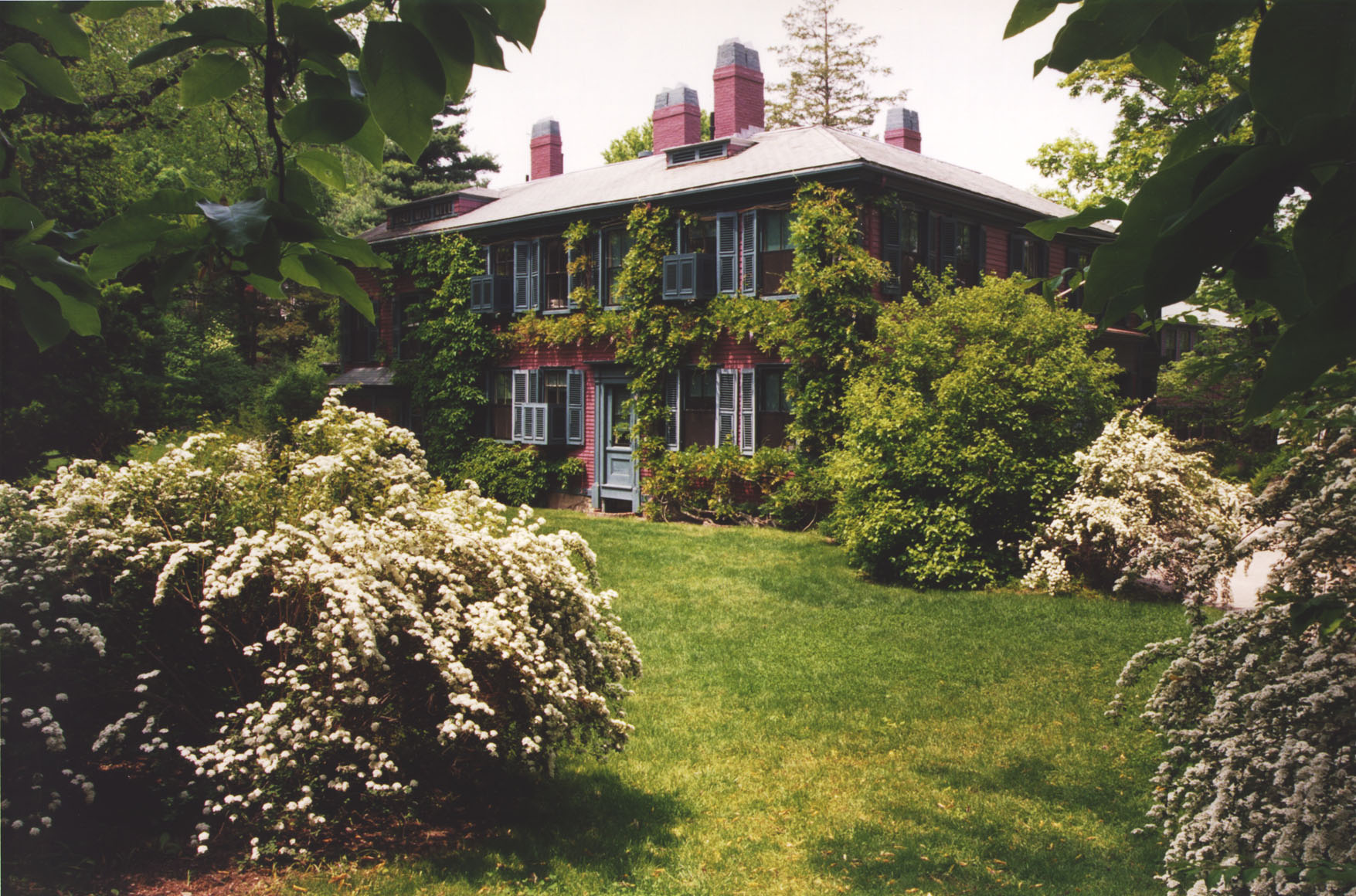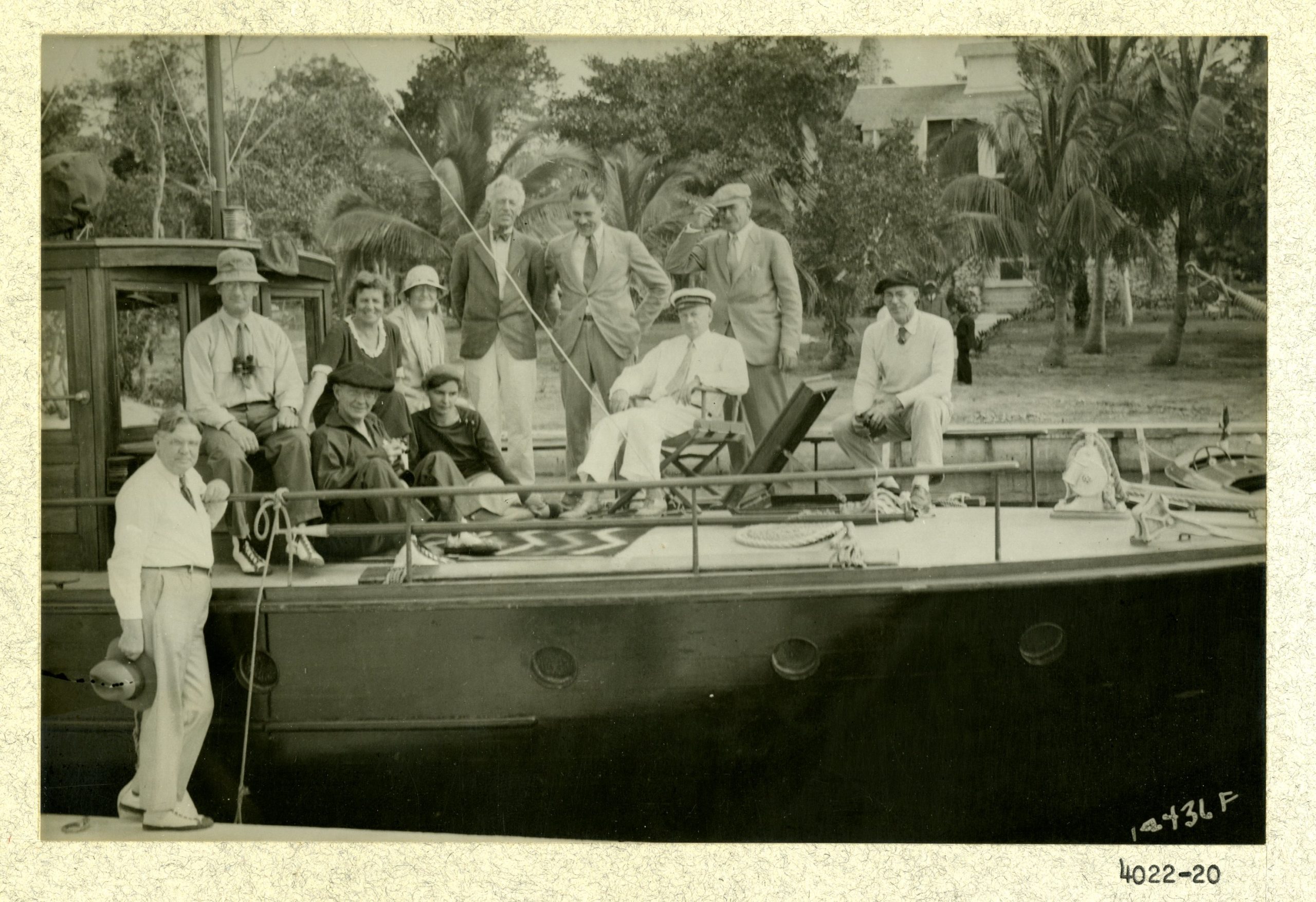
Although we often think of Frederick Law Olmsted as a New Yorker – living and working in Manhattan – in fact, Olmsted moved to Brookline, MA, in 1881 where he told his friend Charles Loring Brace: “I enjoy this suburban country beyond expression and in fact, the older I grow find my capacity for enjoyment increasing.” In Brookline, Olmsted established a home and office, known as Fairsted, which became the first full-fledged landscape architecture practice in the country. The selection of the home and neighborhood was not serendipity. Indeed, Olmsted’s good friend and famed architect, Henry Hobson Richardson, encouraged Olmsted to move there. Olmsted’s property is only a few yards from Richardson’s and the proximity made family interaction and professional collaboration easy.
Olmsted and Richardson were part of a lively community of talented individuals (including Isabella Stewart Gardner and Charles Sprague Sargent) in the neighborhood known as Green Hill, listed on the National Historic Register. Green Hill constituted a veritable “artists’ colony” and working campus of national significance.
The Olmsted firm at Fairsted was a thriving operation for over one hundred years, 1857-1979, with a wide array of principals:
1857-1863 Frederick Law Olmsted and Calvert Vaux
1865-1872 Olmsted, Vaux and Co.
1872-1884 Frederick Law Olmsted, Landscape Architect
1884-1889 F.L. and J.C. Olmsted
1889-1893 F.L. Olmsted and Co.
1893-1897 Olmsted, Olmsted and Eliot
1897-1898 F.L. and J.C. Olmsted
1898-1961 Olmsted Brothers, Landscape Architects
1962 Olmsted Associates, Landscape Architects
1963-1979 Olmsted Associates, Inc.
In 1979, the firm disbanded and the property was up for sale. Congress became aware of the home’s availability. At the direction of Rep. Phil Burton, the National Parks and Insular Affairs Subcommittee (which he chaired), took steps to incorporate Fairsted into the national park system because of the enduring importance of the Olmsted firms’ work.
Now known as the Frederick Law Olmsted National Historic Site (FLONHS), FLONHS houses millions of archival documents and welcomes hundreds of visitors a year in Brookline, Massachusetts.
How did Olmsted’s home and office become the focus of Congressional activity and who in Congress was behind the important preservation of this extraordinary residence and landscape? Olmsted 200 has the story! ….
Former Nebraska Congressman Doug Bereuter was the first professional urban planner elected to Congress. He was a graduate of the Harvard Graduate School of Design.
In 2015 and 2019, he recorded oral histories about his time in Congress with Deborah Harvey, National Park Service, where he outlined his involvement in the creation of national scenic rivers and historic sites including the Frederick Law Olmsted National Historic Site. Mr. Bereuter was a member of the House Committee on Interior and Insular Affairs (now known as the House Natural Resources Committee) from 1979-1982, when legislation was passed making Olmsted’s home a part of the national park system. He and 21 other co-sponsors introduced H.R. 2374 in the House while the Senate introduced S. 495. The legislation was passed by both houses (Public Law 96-87).
We are delighted to share the “origin story” here:
Oral history interview conducted by Deborah Harvey, National Park Service, of Douglas K. Bereuter, Fremont, NE, June 15, 2015. Audio File #MNRR061515. See also Audio File #HOME061419 (June 14, 2019).
Mr. Bereuter:
“When I was a member of the Interior Committee, my first term in Congress, the Chairman of the National Parks Subcommittee was Phil Burton, from San Francisco. He was very outspoken, but very effective at adding new parks to the National Park Service – to the dismay of the Park Service, I think, at times, because he added so much in his legislative bills, omnibus park expansion bills, that he created a lot of maintenance backlogs for them. But, one day – and he was a tough guy, and a lawyer by training, and a partisan Democrat, and profane, especially late in the day – one day he came to me and said, “Bereuter, I understand you’re not just another damned attorney.” And, he didn’t talk to freshman members, in general, but he certainly didn’t talk to freshman Republican members like myself! And I said, “Well, that’s true. I’m not a lawyer, I’m an urban planner by training.” And he said, “Well, how would you like to take on a responsibility for me?” He said, “I want you to go down to Atlanta and talk to Mrs. King. I want to establish a National Historic Site with the buildings …– Martin Luther King related. And talk to Mrs. King. I’ll call her in advance. You take a staff member down.” It was Clay Peters – Republican staffer [who] worked both sides of the aisle to help. And we interviewed Mrs. King. She showed us around the various buildings of the church [Ebenezer Baptist] and the headquarters, and so on. And so … I used my planning background to draw up the proposed boundaries there. So, we took that back to Phil, and he was good at getting legislation passed. And … we established that Martin Luther King, Jr. National Historic Site and I have a picture of Mrs. King, and Burton, and myself in [President Jimmy Carter’s] office at the bill signing. And then, he said, “Well, [I] like what you did. [I w]ant you to go up to Brookline, Massachusetts.”
[This was b]ecause, Frederick Law Olmsted, who is the most famous landscape architect in the history of the country and kind of the father of urban planning as well, his family … had the landscape architecture business in Brookline, and [it was closing down]. “And I want you to look at that.” So, I walked into their wooden building in a very nice residential area, and it’s like they walked away from their drawing boards and they just left everything there: the drawing pencils, the equipment, and so on, and most importantly, there was an archive – a vault– semi-underground in the middle of the building where everything that Olmsted apparently had ever done –and his sons…. was all there, stored in vellum, everything they’d ever done, and I was amazed. They said, “Well, people from Central Park in New York have come here. They don’t know where the utilities are underground, so they’ve had to come up here to look at the drawings and stuff.” So, we passed legislation to get that [property] included, so it, today, is the Olmsted National Historic Site, which is jointly run by the Superintendent that has the Kennedy Birthplace …. So that’s the story of how an urban planner, in his freshman term, made an impact. Because Phil Burton trusted me.
…. So, someday, if they were going to write histories on that – ….
Interviewer: You’d be the first person to talk to, right?
Yeah. And I am a graduate of the Harvard Graduate School of Design, across the river, so I thought maybe they’d want the archives, but, no, they didn’t want them. And so, the Park Service has all that lovely stuff. The Capitol Grounds, the Jefferson Memorial grounds, Golden Gate State Park, … Central Park. You know Olmsted was prolific. The Vanderbilt Mansion, Biltmore – it’s all there. … “











